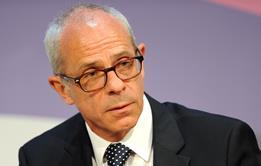The mixed up plan for Monitor and the TDA to ‘work closer’ will leave the new joint regulator’s leadership with challenges in perception and practicality
Such was the trauma caused by the Health and Social Care Act 2012 that the government will do almost anything to avoid primary legislation on the NHS.
Hence we have the proposed mixed up confusion of “closer working” between Monitor and the NHS Trust Development Authority rather than a clean cut merger and/or restructuring.
The majority of what the new joint regulator needs to do can be achieved without legislative change. However, its hybrid nature will leave its leadership with two challenges - one of perception and the other practical.
Monitor has handled the tension between its roles as steward of the foundation trust sector and ensuring adequate choice and competition with some skill. However, with the whole of the provider sector to manage, the new body will find maintaining that balance increasingly problematic.
‘Whoever fills the post is likely to need a higher tolerance for back seat driving by the DH’
The practical problem will arise from its relationship with NHS England, where it must act as a partner on pricing and sector manager and a regulator when it comes to choice and competition.
Then there is the question of who will be the new chief executive. The Department of Health are after a heavy hitter with significant NHS operational experience and if Salford’s Sir David Dalton wants the job it is probably his for the taking.
Whoever fills the post is likely to need a higher tolerance for back seat driving by the DH than the departing David Bennett was apparently able to stomach. Many of the freedoms originally envisaged for Monitor have been worn away in concert with those previously enjoyed by the foundation trusts it brought into being.
Monitor and TDA to join under new chief

Monitor and the NHS Trust Development Authority are to work much more closely together and under a single leader, with a new chief executive due to be appointed by the end of the summer.
- 1
 Currently
reading
Currently
reading
Lansley’s legacy leaves provider regulation in confusion






























6 Readers' comments